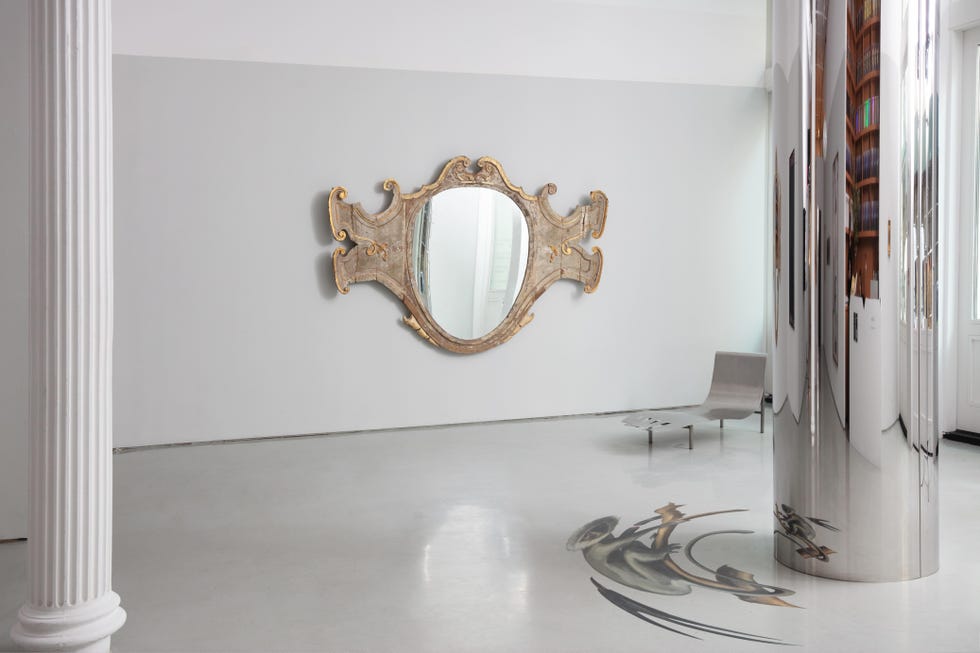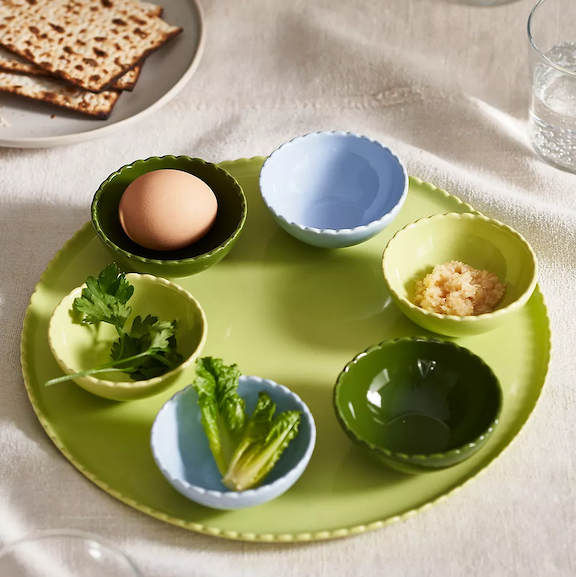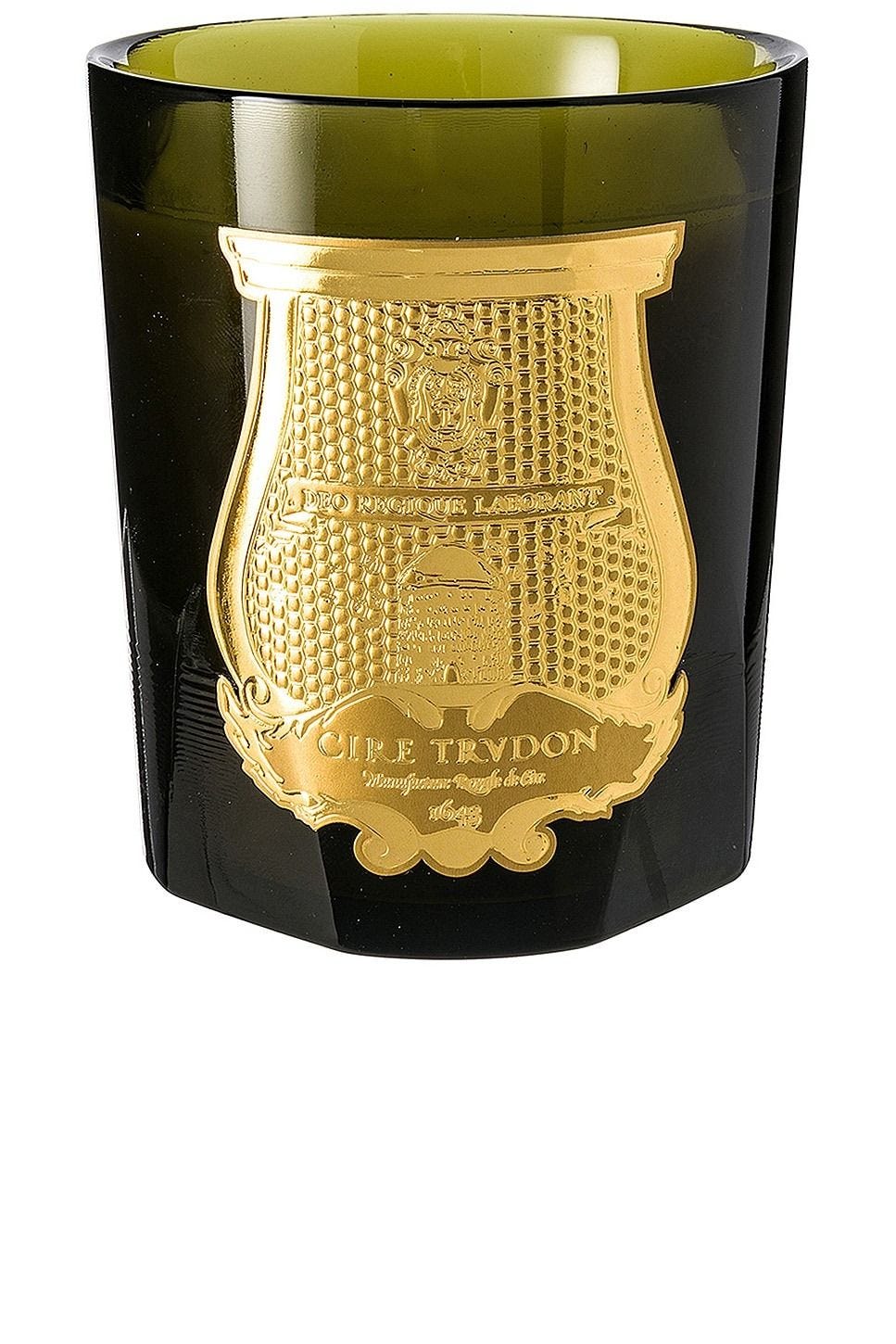We are a curious group here at ELLE Decor, always looking for the next best thing. Or the best old thing. Luckily, it’s spring, which means new blooms and lots of new exhibitions.
Below, we put together our favorite contemporary art, rare antiques, and furniture design shows. Read on for a little taste of what our editors are excited to see this month.
Charlap Hyman and Herrero’s «Glass Subjects» at R & Company
New York City
To look and to see are two different things. Charlap Hyman and Herrero’s new exhibition, “Glass Subjects,” at R & Company plays with the two meanings by highlighting works that engage the surface that reflects as well as the reflected image. Inspired by artist Serge Roche’s 1930’s gallery of mirrors, the exhibition includes over 20 pieces of art that force visitors to reflect literally and figuratively. There’s a rare Nicola L steel lounge chair that references the artist’s fixation with the human form, and, behind it, a 19th-century mirror in an 18th-century Venetian frame that distorts visitors’ forms as they arrive. “It’s like a portal,” Adam Charlap Hyman says.
Around the corner hangs an ode to mortality worthy of Dorian Gray: a Baroque Italian tabernacle from the early 1700s, attributed to Andrea Fantoni. Looking into its mirrored surface, visitors see their reflection flanked by carved skeletons, a reminder in true memento mori fashion that we will all return to dust.
Elsewhere, a mirrored doorway by Maria Pergay serves as a life-size portal, while an aluminum woven breadbox by Arline Fisch from 1976 holds reflections within it. The exhibition is more considered than the innumerable chair shows we’ve seen over the years, and more expansive in it’s interpretation of what reflection is, means, and can do.
Most surprising were a series of four mid-18th-century anamorphosis paintings attributed to the circle of Dutch artist Henry Kettle. To the naked eye, they portray circular, abstract, nearly indecipherable forms. When seen through the reflected surface of a specially designed mirrored tube, they appear as naturally proportioned paintings of animals and humans, leaving some viewers to wonder, what is “real” anyway? And how much of reality is invention?—Camille Okhio
Picasso: Tête-à-tête at Gagosian
New York City
It’s difficult to have a new take on Picasso. One of the most famous artists of all time, there’s little that hasn’t already been said, exhibits that haven’t previously been curated, or opinions not yet wielded. But, in “Tête-à-tête,” a new show at Gagosian on Madison Avenue, a familiar source brings a different perspective, along with previously unseen works. Gagosian collaborated with Paloma Picasso, the artist’s youngest child, to put together a collection of six drawings, 24 sculptures, and 38 paintings, spanning from 1896 to 1972. Picasso’s pieces are not arranged in chronological order but instead mixed up, “in conversation with each other,” the gallery notes. Paloma Picasso’s presence in the exhibit is palpable, between the paintings she owned and now displays for the first time (like the striking Femme au Vase de Houx, 1937) to the photographs of her posted on the gallery walls to her wooden dolls her father sculpted. There are also depictions of her, looking both calm in an elegant sketch (Paloma, 1952) and nearly vengeful in a crimson oil painting (Fillette jouant avec une voiture (Paloma fond rouge, 1951). As Paloma Picasso notes in a statement, “Showing my father’s work as he wanted it to be seen—in conversation across subjects and periods—is a fitting tribute to his legacy.”—Annie Goldsmith
Minjae Kim’s «Phantom 22» at Marta Gallery
Los Angeles, California
Like its title suggests, “Phantom 22,” Minjae Kim’s second solo exhibition with Marta Gallery, is a ghost story. Though New York-based, the Korean American artist and designer built this body of work—tables, stools, sculptures, lights—around Los Angeles’s distinct topographical and sociological makeup. Adept at melding naiveté and refinement, Kim’s work also combines materials. Wax and fiberglass join clay, plaster, aluminum and wood in his creations. Like little, off-kilter creatures, his furniture and sculptures form a bridge between high and low, East and West, the seen and the felt. In one corner of the gallery a fiberglass pillar light stands beside a wooden kiosk of sorts with a fiberglass shell, subtly referential of Do Ho Suh’s work. The two works in conversation feel like shadows in the shops of ancient Rome perhaps or Choson-era Korea. Plaster mountain lions slink around the outskirts of the exhibition as they would in the wild, surveying Kim’s velvet topped bar stools with their handles-cum-clothes hooks, his wall mounted sconces, and his simple, hand-hewn benches. —C.O.
Ian Hamilton Finlay: Fragments at David Nolan Gallery
New York City
Philosopher. Sculptor. Poet. Gardener. The late Scottish polymath Ian Hamilton Finlay, who would have turned 100 this month, is being celebrated with eight global exhibitions, including in London, Vienna, and Edinburgh. In New York, David Nolan is exhibiting works from the 1970s-1990s—sculptures in porcelain, stone, bronze and plaster, as well as prints—in Ian Hamilton Finlay: Fragments (May 8-June 7). The exhibit, designed by artist David Hartt, reveals the unique nature of Finlay’s practice, which combined wordplay, classical motifs, and the influence of history, philosophy, and myth with his longtime interest in gardening (his magnum opus is Little Sparta, his garden near Edinburgh). The works on view range from a bronze watering can on a pedestal to a bust of philosopher Jean-Jacques Rousseau paired with a ceramic vase holding a wildflower.—Ingrid Abramovitch
Jack Whitten: The Messenger at the Museum of Modern Art
New York City
Jack Whitten’s paintings are like voids you fall into before finding you don’t want to leave. He thought of himself as a medium, with a spirit moving through him into his works. It’s easy to believe, as his paintings feel like prayers: earnest and pleading, professions of desire. Privileging unexpected objects and tools over brushes, his work also carries very physical suggestions of the artist’s presence and agency, through highly textured and rhythmic surfaces. In “Four Wheel Drive,” painted in 1970, the jolt of a speedy, sharp turn comes through in curved ridges that emanate from the painting’s center. In “Mirsinaki
Blue,” painted in 1974,” Whitten’s swaths of blue, brown, and grey relay the motion of a ship’s deck, swaying and inconsistent, but still somehow guided by an unseen force. —C.O.









